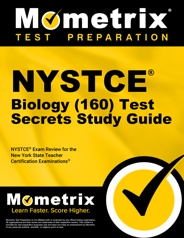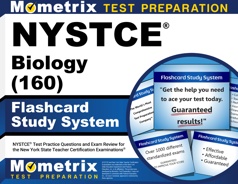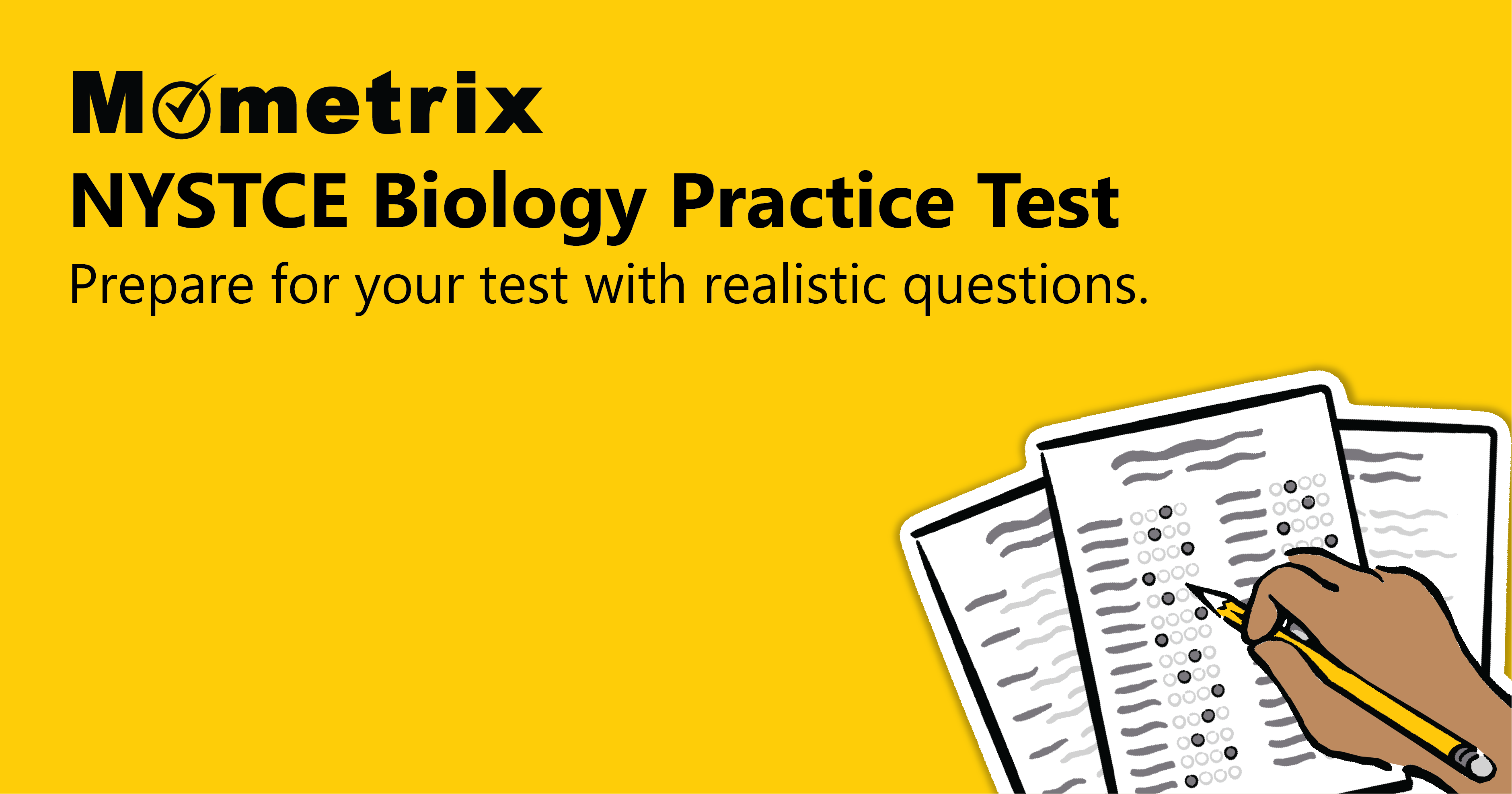The New York State Teacher Certification Exams program (NYSTCE) was designed for teachers in New York State to ensure proficiency in specific educational areas. The NYSTCE Biology exam is designed for prospective biology teachers in the state of New York.
Click “Start Test” above to take a free NYSTCE Biology practice test, and check out our premium-quality NYSTCE test prep resources by clicking the links below!
NYSTCE Biology Exam Outline
The NYSTCE Biology exam contains 90 selected-response questions and one constructed-response question, and you will be given a time limit of 3 hours and 15 minutes.
The exam is split into seven competencies:
1. Structure and Function of Cells and Molecules (13%)
The questions in this competency are designed to assess your knowledge and skills pertaining to the following:
- Characteristics of living things
- Structures and functions of different types of cells
- Primary functions, products, interactions, and processes of various cellular structures
- Processes of movement of matter and use of energy during active and passive transport
- The cell cycle
- The significance of normal and abnormal cell division in unicellular and multicellular organisms
- The stages, processes, and outcomes of mitosis and meiosis
- The significance of meiosis and fertilization in increasing genetic diversity and contributing to the evolution of multicellular organisms
- Basic chemistry and biochemistry
- Unique properties of water and their significance to living organisms
- The structure and function of enzymes
- The engineering design process as it pertains to the function and structure of cells and molecules
- Planning, constructing, and safely carrying out investigations into the function, structure, and processes of cells and molecules
- Drawing inferences from scientific and technical texts and graphics
2. Structure and Function of Organisms (14%)
The questions in this competency are designed to assess your knowledge and skills pertaining to the following:
- General characteristics, functions, and structures of viruses, protists, and prokaryotes
- The hierarchical organization, interactions, and functions of systems that provide specific functions
- The hierarchical organization and function of systems that perform specific processes
- Structures, disorders, and functions of the human reproductive systems and their interactions with other body systems
- The role of reproduction and development in sustaining the continuity of life
- The pattern, processes, and characteristics of human growth and development
- Feedback mechanisms that maintain homeostasis and mediate behaviors in plants and animals
- The link between a failure of homeostasis and disease
- The engineering design process as it pertains to the function and structure of organisms
- Planning, constructing, and safely carrying out investigations into the functions and structures of an organism or body system
- Drawing inferences from scientific and technical texts and graphics
- Appropriate resources regarding the safe and proper use of scientific equipment and materials
3. Matter and Energy (13%)
The questions in this competency are designed to assess your knowledge and skills pertaining to the following:
- The inputs, products, and processes of photosynthesis and cellular respiration
- The transfer of energy in living systems as chemical elements recombining in different ways to form various products
- ATP production through chemiosmosis
- The relationship between chloroplast structure and function in photosynthesis
- Biochemical pathways involved in the anabolism and catabolism of major biomolecules
- The formation of molecules
- The storage and transfer of energy at the molecular and cellular levels
- The significance of photosynthesis and respiration in providing energy for life processes
- The cycling matter and flow of energy through the trophic levels in an ecosystem
- Using mathematical and graphical models pertaining to the cycling of matter and flow of energy among organisms
- The transfer of chemical elements and molecules between abiotic and biotic components of ecosystems through biogeochemical cycles
- The engineering design process as it pertains to the transfer of matter and energy in cells, ecosystems, or organisms
- Planning, constructing, and safely carrying out investigations into the transfer of matter and energy in cells, ecosystems, or organisms
- Drawing inferences from scientific and technical texts and graphics
4. Interdependent Relationships in Ecosystems (13%)
The questions in this competency are designed to assess your knowledge and skills pertaining to the following:
- The biotic and abiotic factors that affect the carrying capacity of an ecosystem
- Characteristics of populations
- Patterns of interactions and dependencies between organisms in an ecosystem
- Analyzing claims, reasoning, and evidence pertaining to ecosystem functioning and relationships within an ecosystem
- The influence of individual and group behaviors on the chance of survival and reproduction
- Biodiversity
- Concepts of stability and resilience as they pertain to ecosystems
- Evaluating and designing practical solutions for reducing the impacts of human activities on the environment and biodiversity
- The engineering process as it pertains to the interdependent relationships in ecosystems
- Planning, constructing, and safely carrying out investigations into the characteristics of populations and ecosystem functions
- Drawing inferences from scientific and technical texts and graphics
5. Inheritance and Variation of Traits (14%)
The questions in this competency are designed to assess your knowledge and skills pertaining to the following:
- The structures and functions of DNA
- The mechanism of DNA replication
- Types, causes, and effects of mutations on DNA molecules
- The control of gene expression in cells
- The roles and relationships between DNA, alleles, genes, and chromosomes
- Processes that may produce heritable genetic variations
- The laws of classical genetics and basic principles of heredity
- Probability and statistics and graphical representations used to analyze genetic inheritance problems
- The historical development of scientific understanding of the patterns and mechanisms of inheritance
- Technological developments in genetic engineering
- The engineering design process as it pertains to the inheritance and variation of traits
- Planning, constructing, and safely carrying out investigations into gene expression, inheritance, and the variation of traits
- Drawing inferences from scientific and technical texts and graphics
6. Evolution and the Unity and Diversity of Life (14%)
The questions in this competency are designed to assess your knowledge and skills pertaining to the following:
- Analyzing empirical evidence from various areas of biology
- The interacting factors that may result in evolution
- Sources of variation of heritable traits in a population on which natural selection can act
- Principles of population genetics
- Determining the frequency of genotypes in a population using the Hardy-Weinberg principle
- Environmental factors and events that may cause speciation, species decline, or extinction
- Comparing alternative patterns of evolution and related evidence
- The historical development of explanations of how organisms change over time
- Basic principles of taxonomy and criteria used to classify organisms
- Interpreting data and representations of evolutionarily related species
- The unity and diversity of life
- Comparing organisms and how they are classified into major taxa based on their traits
- The engineering design process as it pertains to evolution and the unity and diversity of life
- Planning, constructing, and safely carrying out investigations into evolution and the unity and diversity of life
- Drawing inferences from scientific and technical texts and graphics
7. Pedagogical Content Knowledge (20%)
This competency contains the only constructed-response question on the exam. You will be asked to write a short analysis of design instruction that helps students achieve a specific learning goal.
Check Out Mometrix's NYSTCE Biology Study Guide
Get practice questions, video tutorials, and detailed study lessons
Get Your Study Guide
Exam Registration
To register for the NYSTCE Biology exam, you will need to create an NYSTCE account online and complete the registration process there. It is recommended that you complete the registration process at least 30 days before you take the exam.
During this process, you will be asked some questions about your educational history, as well as your current education level, first language, matriculation status, and the education code for the NYC Department of Education program type you are associated with.
The examination fee is $122.
Test Day
On testing day, you should arrive at the testing center about 30 minutes earlier than the scheduled exam time. Once you arrive, you will be asked to sign in and provide a valid form of government-issued photo ID.
Before the exam begins, you will be asked to place all personal items (cell phone, keys, wallet, bags, accessories etc.) in a locker outside the testing room, or you may be asked to leave them in your car.
Once the test begins, you will be allowed to take breaks. However, the timer will not be stopped during your break, so use your break time carefully.
How the Exam is Scored
Your total NYSTCE Biology score is based on the number of questions you answered correctly, which is then reported as a numerical figure in the range of 400-600. To pass the exam, you must achieve a scaled score of 520.
You should receive your test results roughly 2-4 weeks after taking the exam. When you receive your score report, you will see your total score, your pass/fail status, and your scores for each subarea of the test.
Check Out Mometrix's NYSTCE Biology Flashcards
Get complex subjects broken down into easily understandable concepts
Get Your Flashcards
FAQs
Q
How many questions are on the NYSTCE Biology exam?
A
There are 91 questions on this exam.
Q
How long is the NYSTCE Biology exam?
A
The time limit for this exam is 3 hours and 15 minutes.
Q
What is the passing score for the NYSTCE Biology exam?
A
To pass the exam, you must achieve a scaled score of at least 520.
Q
How much does the NYSTCE Biology exam cost?
A
The examination fee is $122.
NYSTCE and New York State Teacher Certification Examinations are trademarks of the New York State Education Department and Pearson Education, Inc. or its affiliate(s). This page was developed by Mometrix Test Preparation. It was not developed in connection with Pearson Education, Inc., nor was it reviewed, approved or endorsed by these agencies.


